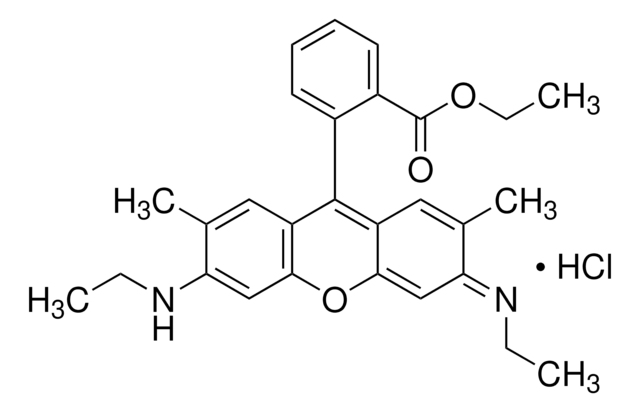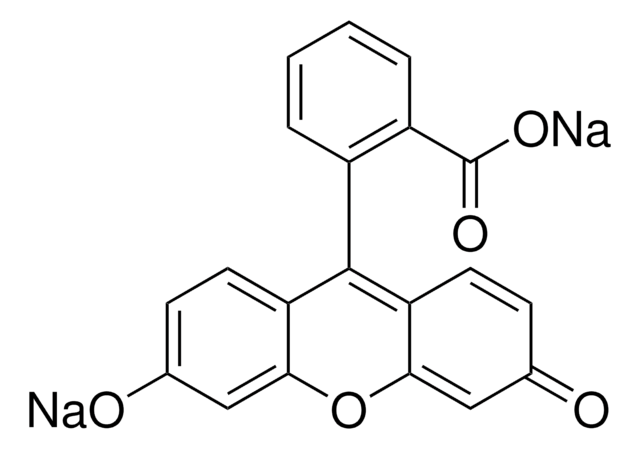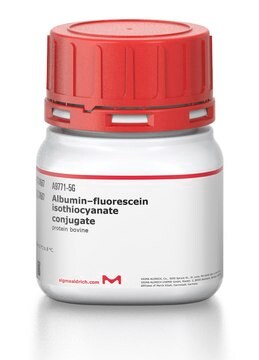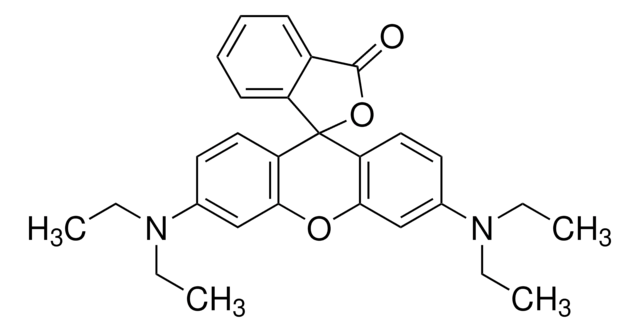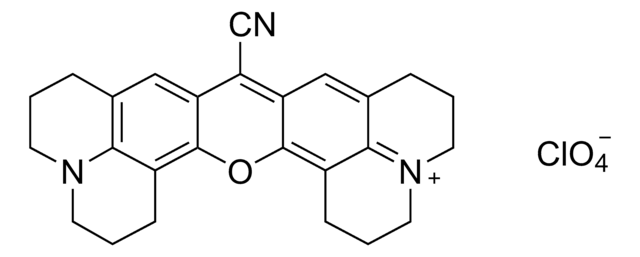83697
Rhodamine 6G
suitable for fluorescence, BioReagent
Synonym(s):
Basic Red 1
About This Item
Recommended Products
product line
BioReagent
form
powder
solubility
H2O: soluble
ethanol: soluble
fluorescence
λex 528 nm; λem 551 nm in methanol
suitability
suitable for fluorescence
SMILES string
Cl.CCNc1cc2OC3=CC(=N/CC)\C(C)=CC3=C(c2cc1C)c4ccccc4C(=O)OCC
InChI
1S/C28H30N2O3.ClH/c1-6-29-23-15-25-21(13-17(23)4)27(19-11-9-10-12-20(19)28(31)32-8-3)22-14-18(5)24(30-7-2)16-26(22)33-25;/h9-16,29H,6-8H2,1-5H3;1H/b30-24+;
InChI key
VYXSBFYARXAAKO-WTKGSRSZSA-N
Looking for similar products? Visit Product Comparison Guide
Related Categories
Application
Biochem/physiol Actions
Analysis Note
Signal Word
Danger
Hazard Statements
Precautionary Statements
Hazard Classifications
Acute Tox. 3 Oral - Aquatic Acute 1 - Aquatic Chronic 1 - Eye Dam. 1 - Skin Sens. 1
Storage Class Code
6.1C - Combustible acute toxic Cat.3 / toxic compounds or compounds which causing chronic effects
WGK
WGK 3
Personal Protective Equipment
Choose from one of the most recent versions:
Already Own This Product?
Find documentation for the products that you have recently purchased in the Document Library.
Customers Also Viewed
Our team of scientists has experience in all areas of research including Life Science, Material Science, Chemical Synthesis, Chromatography, Analytical and many others.
Contact Technical Service